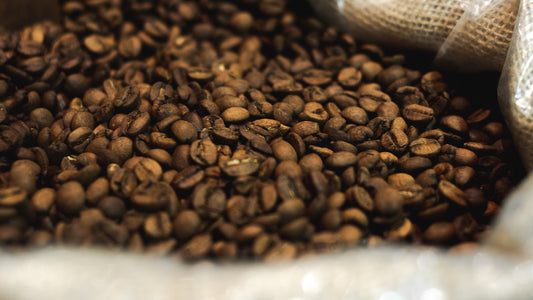Processing Coffee
Coffee processing refers to the methods farmers use to extract the coffee seed or seeds from a coffee cherry. No, there are no honeybees involved in the process! Rather, it is a unique method used by several growers which utilizes the mucilage from the coffee cherry to extract floral and sweeter notes in the beans.
Coffee Bean Morphology
To better understand the Honey Processing of beans we must first analyze the anatomy of the coffee cherry. From external to internal: Outer skin, pulp, mucilage, parchment, silverskin, bean (seed).



The Process
Honey Processed coffee requires a combination on a natural and washed method, more unique and by far much more demanding in comparison to the before mentioned styles. The process begins with the use of a depulper, which extracts the seed or seeds form the cherry but rather than washing the remaining mucilage from the coffee cherry it remains on the bean to ferment under the sun.

The beans are then spread out on a surface to dry and ferment which is a challenging process to the unexperienced. The beans have to be rotated to augment the fermentation process but without molding. There are several honey types: white, yellow, red, and black each varying in amounts of mucilage remaining and the frequency of rotation of the bean.
The amount of mucilage and the frequency of rotation are essential factors to process the varying honey types and flavors.
As a generalized approach:
Black Honey has more mucilage, less daily rotation.
Yellow Honey contains less mucilage, more frequent rotation.
Red Honey falls between Black and Yellow.
White Honey has very little mucilage and very minimal rotation.
Rotation
Rotation is an essential step in producing a honey varieties as it stimulates the release of oxygen and prevents the formation of mold which in humid climates, such as the ones where coffee is grown, can be quite an easy by product. Black Honey coffee is rotated once a day, Yellow Honey is rotated every hour, Red Honey falls in between the two with several rotations a day, and White Honey is the least rotated.
Mucilage
Mucilage is the inner layer of the cherry pulp, full with sugars just yearning to ferment in high humidity climates. The higher the mucilage content during the drying process, the more sugars will ferment and naturally turn the coffee cup sweeter but also acidic.
So, there you go! Honey Processing of Coffee in a nutshell. If you come across the option to try a honey processed bean be sure to experience the uniqueness of these coffee delicacies.





